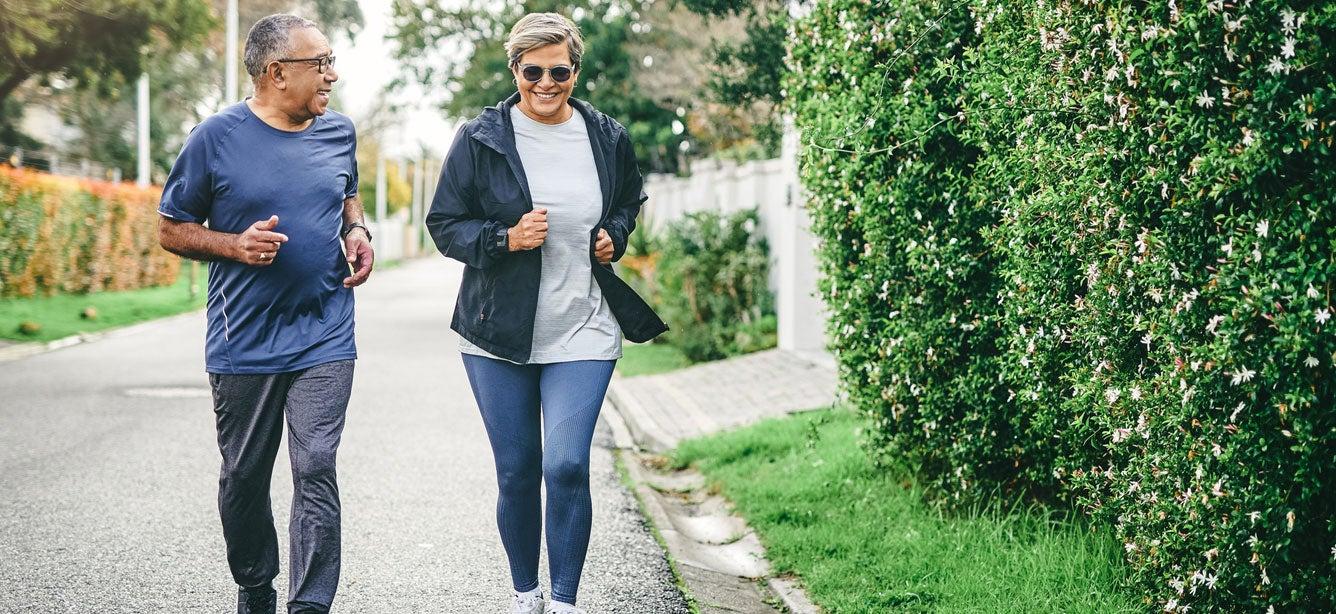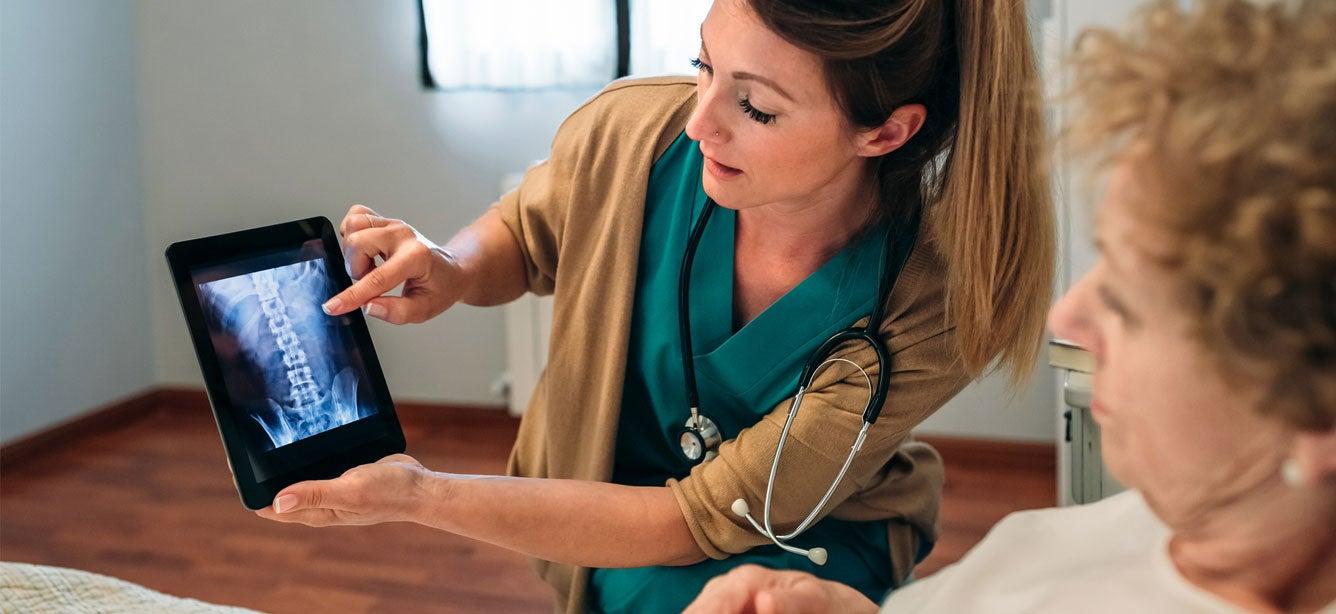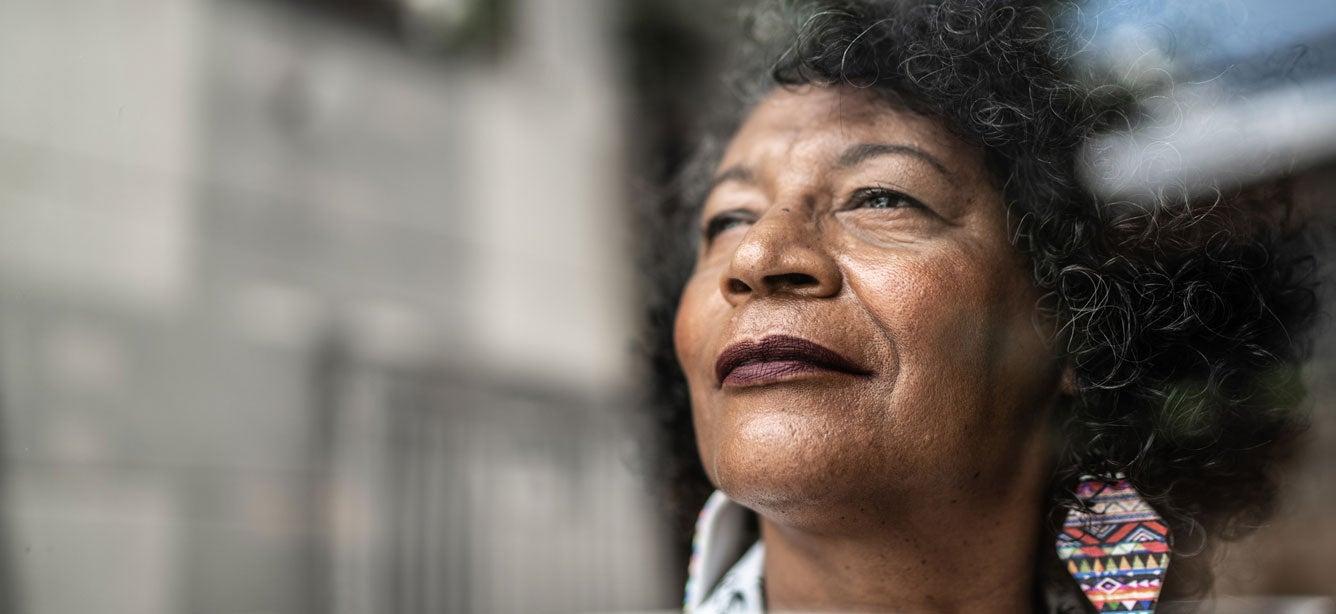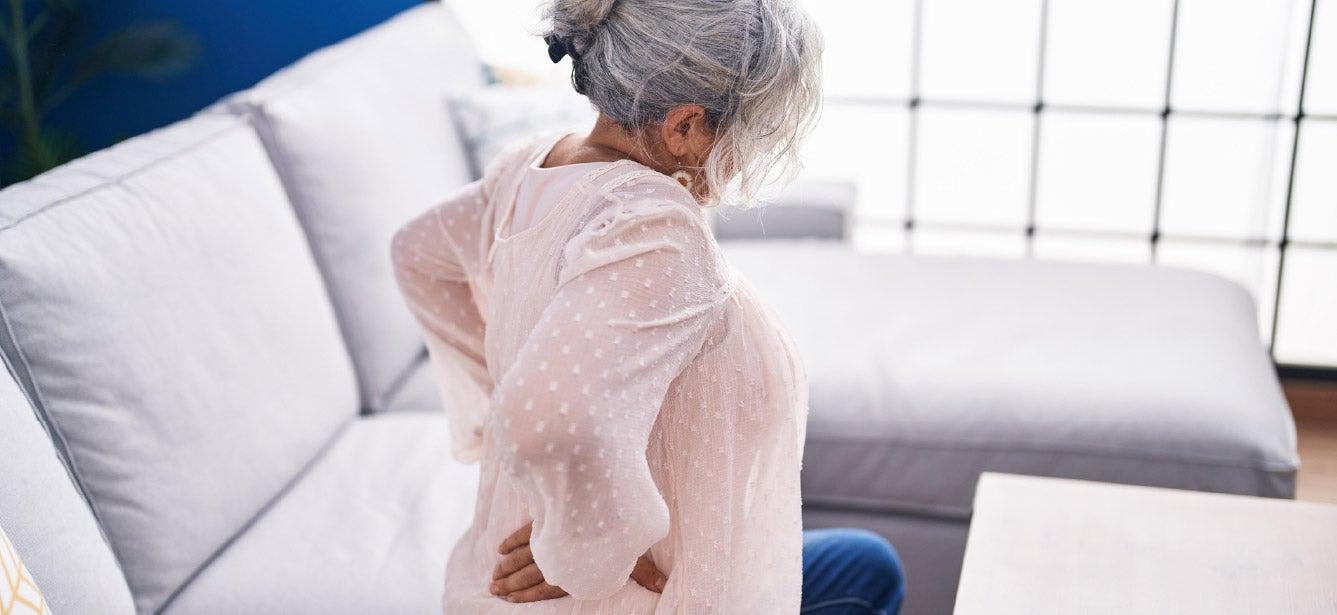
Related Topics
Bones are made up of living tissue that's constantly changing. During our lifetime, our body relies on the minerals calcium and phosphate to keep our bones strong and healthy. As we age, however, our bodies tend to reabsorb these minerals instead of keeping them in our bones.
When more old bone is reabsorbed and not enough new bone is generated, bone loss occurs. And if there is too much loss of bone, it can lead to a disease called osteoporosis.
The word "osteoporosis" literally means "porous bone." Under a microscope, healthy bone resembles a honeycomb. But with osteoporosis, the bone has much larger holes and spaces. This makes bones less dense, more brittle, and more prone to fracture.
Osteoporosis is often called a “silent” disease, because many people have no symptoms at all. The disease may progress for many years undetected—until a broken bone occurs. Osteoporosis can cause painful and debilitating broken bones called fragility fractures. These fractures can compromise a person’s ability to walk, cause deformities and loss of height, and significantly lower quality of life. Osteoporitic fractures may even indirectly lead to death, since complications related to a fracture can cause an older person’s health to go downhill quickly.
Who is most likely to get osteoporosis?
Osteoporosis affects about 54 million people in the U.S. Although this disease happens in both men and women, women are four times more likely to develop it than men. Osteoporosis risk climbs with age; many women begin to develop it following menopause.
Non-Hispanic white women and Asian women are most likely to get osteoporosis. Black and Hispanic women are less likely to develop this disease, but they are still at significant risk.
What is the cause of osteoporosis?
There’s no single, specific cause of osteoporosis, but there are many known risk factors. Some of these are beyond our control, such as our gender and age—women experience rapid bone loss during the first 10 years after entering menopause. Other risk factors include:
- Family history: Is osteoporosis hereditary? Maybe. Having a close family member (e.g., your mother) with osteoporosis or a history of broken bones can increase your risk.
- Body weight and frame: Thin, small-framed people are at greater risk for developing osteoporosis. This is because they have less bone to lose than people who have larger frames and carry more body weight.
- Certain medical conditions: Some health conditions and medical procedures may make you more susceptible to osteoporosis, such as:
- Thyroid disorders
- Rheumatoid arthritis
- HIV/AIDS
- Anorexia nervosa
- Celiac disease
- Blood disease (e.g., multiple myeloma, sickle cell disease)
- Stroke
- Weight loss surgery
- Gastrectomy
- Some medications: In certain cases, medications can cause damage to your bones and increase your osteoporosis risk. These include:
- Hormone treatments for breast or prostate cancer
- Steroids
- Anti-seizure medicine (e.g., Phenobarbital)
- Aluminum-containing antacids
- Cancer chemotherapeutic drugs
- Smoking and alcohol use: Smoking cigarettes can prevent your body from utilizing dietary calcium. Excessive drinking can also increase osteoporosis risk.
- Lack of exercise: Physical activity helps bones stay strong. Leading a sedentary lifestyle can compromise your bone health.
- Nutritional deficiencies: A lack of calcium in your diet can raise your risk for osteoporosis. This is also true for vitamin D, since it helps your body use the calcium you get from food.
What are some signs and symptoms of osteoporosis?
Osteoporosis typically does not produce any symptoms until a bone fracture occurs. But you should tell your doctor if you notice any of the following:
- Lower back pain
- Loss of height by 1” or more
- Shortness of breath
- Posture changes (e.g. hunching over)
How is osteoporosis diagnosed?
Osteoporosis diagnosis involves getting a bone density test that yields more insight about your bone health. This test is a quick, inexpensive, and painless way to determine your risk for osteoporitic fractures. It’s performed using a DXA scan, which is short for dual energy x-ray absorptiometry. The DXA scan uses low levels of x-rays to measure the mineral content of your bones.
The Bone Health & Osteoporosis Foundation (BHOF) recommends a bone density test of the hip and spine for women who:
- Are age 65 or older
- Are of menopausal age with osteoporosis risk factors
- Are postmenopausal under age 65 with risk factors
You should also get a bone density test if you break a bone after the age of 50 following a minor fall or injury.
How is osteoporosis treated?
There is no one-size-fits-all treatment for osteoporosis. Rather, treating it may involve a combination of medication, supplements, and lifestyle changes.
Medication
If your bone density test shows T-scores of -2.5 or lower, you may be prescribed medication to strengthen your bones. There are several classes of safe, effective drugs that are approved for osteoporosis prevention and treatment, including:
- Hormone and hormone-related therapy
- Bisphosphonates
- Biologics
- Anabolic agents
Some medicines are best-suited to older women versus younger women who are pre-menopause. Your doctor will discuss your options with you and help you choose the best osteoporosis medication based on your overall health and how much bone you've lost. Your personal preferences matter as well, since some medications are given as an injection, while others come in the form of a liquid or pill.
Dietary supplements
If you've been diagnosed with osteoporosis or are trying to prevent it, your doctor may advise you to increase your intake of calcium and vitamin D. BHOF recommends that women age 51 and older get 1,200mg of calcium daily, while most adults age 50 and older need 800-1,000 IU daily of vitamin D. Taking a multivitamin or supplements can help you get a sufficient amount of these nutrients if you’re not getting them from food or diet alone.
Keep in mind that over-the-counter dietary supplements are not regulated like prescription medications. Before taking any supplements, discuss it with your doctor.
Lifestyle changes
If you have osteoporosis, it’s important to limit alcohol and caffeine and avoid the use of tobacco products. Regular exercise can help slow or prevent bone loss as well as boost muscle strength, improve balance and posture, and relieve pain. Stick to weight-bearing activities such as walking, jogging, dancing, and weight lifting. Be sure to ask your doctor before beginning an exercise regimen.
Another important part of treatment for osteoporosis is preventing falls inside and outside your home. This may involve steps such as:
- Keeping your floors free of clutter (e.g. loose electrical cords)
- Using non-skid floor mats and area rugs
- Installing grab bars in the bathroom and railings on stairways
- Making sure you have sufficient lighting throughout your home
- Keeping outdoor areas free of clutter and in good repair
- Wearing flat shoes with non-slip bottoms when you leave the house
If you feel you might benefit from assistive devices (e.g., cane, raised toilet seat, stair lift), your health care provider can connect you with resources that can help.
Want to learn more? Get the facts about osteoporosis, falls, and broken bones.



